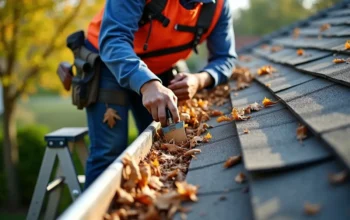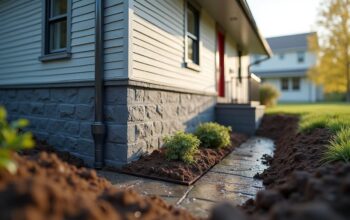
Neglecting your air conditioner can lead to unforeseen costs beyond initial purchase. Many homeowners assume their central air conditioning system operates fine until it visibly fails, but hidden issues can creep up and affect overall efficiency. Neglecting routine checks can lead to expensive repairs, increased heating and cooling expenses, and even a shortened life expectancy of air conditioners. Paying close attention to these factors is essential to maintain a comfortable home without breaking the bank.
Contents
- 1 The consequences of neglecting routine AC care
- 2 Why maintenance costs for AC make a difference
- 3 Factoring in repair costs for air conditioning
- 4 Long-term costs of air conditioning you should note
- 5 More than just a purchase: considering installation labor charges
- 6 Energy consumption and the bigger picture
- 7 Avoiding surprises in your home cooling costs
- 8 Rethinking AC ownership
The consequences of neglecting routine AC care
Regular maintenance is crucial to ensure your air conditioning unit price isn’t the only expense you face. When filters remain clogged and parts aren’t cleaned, the system strains to maintain the desired temperature. That strain not only increases your average cost of cooling over time but also contributes to premature wear and tear. Eventually, this leads to higher repair costs for air conditioning, especially if small issues are ignored for too long.
Neglect can also affect your indoor air quality. Dust accumulates in the ducts, and the system can spread allergens and pollutants throughout your home. This scenario is not only uncomfortable but may lead to potential health concerns. Taking small steps toward regular upkeep helps prevent these hidden pitfalls before they escalate.
Escalating repair bills
When an air conditioning system runs nonstop with dirty coils or filters, parts begin to degrade. This can trigger multiple breakdowns, each pushing your cooling system expenses higher. An AC installation fee for replacing large components might seem like a one-time cost, but repeated repairs will put an even bigger dent in your budget. Addressing these issues early keeps smaller problems from turning into large financial outlays, allowing you to save on AC unit replacement costs over time.
Why maintenance costs for AC make a difference
Routine inspections and cleaning sessions may feel like extra chores, yet they’re typically less expensive than waiting until something breaks. An HVAC technician can spot warning signs long before the system stops cooling your home. For example, an odd noise or a slight drop in air pressure might point to a faulty part. Fixing it early can save you from costly emergency visits and further home cooling costs in the peak of summer.
When you invest in maintenance, you also prolong the life expectancy of air conditioners. Simple tasks like changing filters and cleaning condenser coils go a long way. By doing so, you can delay the day when you’ll be forced to pay another AC installation cost or buy an upgraded model. It’s a practical way to manage heating and cooling expenses without sacrificing indoor comfort.
The link to energy efficiency ratings
A pristine unit typically retains higher energy efficiency ratings, meaning it uses less electricity. In contrast, neglected systems lose efficiency and start to consume more power. Over time, that inefficiency can reflect heavily on your summer electricity bill. Staying on top of basic care means more energy consumption savings, which ultimately lowers the overall cost of running an air conditioner.
Factoring in repair costs for air conditioning
Unexpected breakdowns usually occur when you least expect them—often on the hottest days of the year. If you haven’t set aside a budget for potential repairs, you’ll find yourself shouldering high HVAC prices for immediate fixes. Those who skip routine checkups also run the risk of needing replacement parts that might no longer be widely available. This scenario can turn a simple fix into a significant investment, potentially costing more than you originally paid for the window air conditioner price or a portable air conditioner cost.
Planning ahead and setting up a regular inspection schedule can minimize these sudden spikes in air conditioning cost. Technicians can diagnose a developing problem, thus allowing you to avoid paying a premium for emergency repairs. Plus, you’ll have more time to consider whether upgrading to a ductless AC unit price or a new model might be more cost-effective in the long run.
Seasonal promotions for air conditioners
Choosing to upgrade when your system shows signs of failing can sometimes align with seasonal promotions for air conditioners. Many manufacturers offer sales during certain times of the year, such as the off-season, to boost business. If you’ve maintained your current unit well, you’re in a stronger position to decide when and how to replace it. That flexibility can save you thousands compared to rushing into a new purchase during peak demand.
Long-term costs of air conditioning you should note
Many people focus on the upfront expense, like a window air conditioner budget or a ductless air conditioner price. But the true cost spans several years. Low-cost models might seem like a bargain at first but can rack up high bills over time due to poor energy efficiency. Investing in quality can lower your central air cost in the long run by reducing maintenance and operating expenses.
Additionally, consider the financing options for AC purchase if you decide to upgrade. Spreading the payments out can make even a higher-priced system more manageable. This approach might also open the door to better features and cooling capacity and pricing that fit your home’s layout. You’ll want to balance initial outlay with the projected lifetime expenses, as this leads to more confident decisions about cost of running an air conditioner well into the future.
Brand comparison for AC units
Not all brands are created equal. Some have better reputations for reliability, while others excel at energy efficiency. This variation can make choosing the right system for your home a bit challenging. Conducting a quick brand comparison for AC units before finalizing your purchase can spare you from extra maintenance calls and parts replacements further down the line.
More than just a purchase: considering installation labor charges
Your air conditioner price is only part of the story. AC installation cost includes not only the system itself but also the labor and potential modifications to your existing ductwork. For a central cooling system cost, you might need to budget for specialized installation labor charges, particularly if your home’s layout requires extensive changes. Even a mini-split air conditioner cost can rise if walls need modifications for indoor units.
When you neglect your system, these installation expenses might crop up more frequently. An aging or improperly maintained AC can fail prematurely, forcing another step in the cycle of removing, disposing of, and installing a new unit. Regular servicing extends the time between replacements, so you can direct your funds elsewhere.
Split system cost and ductless solutions
Split systems and ductless AC units often offer more flexibility in terms of home layout and zone control. They might, however, come with a hefty initial price tag. If you fail to maintain these systems, you’ll lose the benefits of their energy efficiency and end up with higher heating and cooling expenses. A little regular attention helps these specialized units perform at their best, lowering their overall air conditioner maintenance cost.
Energy consumption and the bigger picture
High energy bills don’t typically appear overnight. A neglected system might quietly waste electricity for months or even years. All that extra consumption gradually drives up your cost of running an air conditioner, creating a persistent drain on your finances. When you keep the system in top shape, you reduce wasted power and keep cooling consistent, especially during scorching summers.
The seasonal energy efficiency ratio (SEER) rating measures how efficiently an air conditioner operates. Even if your unit came with a respectable SEER rating, dust buildup and worn parts can slash its efficiency. Overvaluing the initial purchase and undervaluing routine care leads to disappointment and higher monthly bills. Prioritizing upkeep allows you to retain the maximum SEER performance your system was designed to provide.
The role of proper sizing
Oversized or undersized units can also complicate matters. When the system is too big, it cycles on and off constantly, causing wear on components. If it’s too small, it runs longer than it should. Proper cooling capacity and pricing aren’t just random numbers; they influence comfort, efficiency, and the overall air conditioning system expenses you’ll face. Getting the right size via a buying guide for air conditioners can spare you from future headaches.
Avoiding surprises in your home cooling costs
Pushing off minor fixes might seem like a cost-saving move until the bigger problems surface. By then, you may find yourself dealing with uncomfortable indoor temperatures and urgent repair bills. Even your window air conditioner price can spike if you need quick replacements for smaller spaces like home offices or bedrooms. Timely checkups and cleaning keep the chance of these disruptions to a minimum.
Financing options for AC purchase can help you plan for inevitable upgrades, but you still want to avoid rushing into replacements. A well-maintained unit can last many years, shielding you from hasty decisions and ballooning expenses. While ignoring routine tasks may save you time upfront, it’s the long-term costs of air conditioning that can catch you off guard.
AC installation cost vs. ongoing care
Paying an installation fee once might appear simpler than scheduling annual service visits. Unfortunately, a neglected system often delivers inconsistent cooling, making your home less comfortable. You’ll end up paying more on utility bills and encountering frequent repair visits, each escalating your total air conditioning cost. Balancing regular maintenance with responsible usage is key to keeping everything at a manageable level.
Rethinking AC ownership
Whether you own a single window unit or a more sophisticated central cooler, how well you maintain it significantly affects your finances over time. The upfront air conditioning unit price rarely tells the full story. Skimping on professional maintenance might feel logical until you face an unexpected breakdown on a sweltering day. Consistent care helps your system function smoothly and reduces the chance of catastrophic failures.
Staying informed about HVAC prices and scheduling timely inspections allows you to spread out costs in a more controlled manner. By planning ahead and addressing minor glitches when they arise, you skip the panic-driven expenses that often come with a neglected AC. It’s far easier to stay ahead of potential damage than to remedy a large issue once your home is already uncomfortably warm.
Making your system last
Prolonging your air conditioner’s lifespan is about more than simply cleaning it occasionally. Each component of an AC unit plays a role in cooling your space. Ensuring those parts remain in good condition means you can delay that dreaded central air conditioning cost for a new system. Regular attention and occasional upgrades, like installing a programmable thermostat or high-efficiency part replacements, can provide continued comfort with fewer hiccups.
Ultimately, the most effective way to protect your investment is through vigilance. Keep an eye on how your system performs, tune it up as needed, and don’t postpone minor fixes. In return, you’ll experience fewer surprises, steadier home cooling, and long-term savings that make the initial purchase worth every penny.



